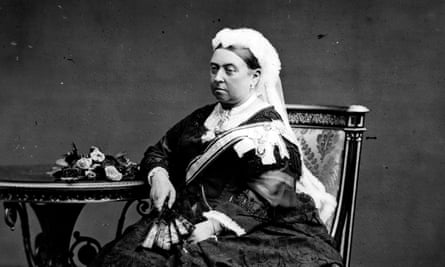Another day, another royal image manipulated. First there was the shock disclosure by photo agencies last week that Catherine, Princess of Wales, had slightly tinkered around the edges of a family photograph taken by her husband. Now comes the revelation of another altered picture, this time of Queen Elizabeth at Balmoral in her last weeks, surrounded by grandchildren and great-grandchildren.
When it was first released nearly a year ago, no one noticed that the patterns on the queen’s tartan skirt did not match, or that among several other egregious manipulations the image of Prince Louis may have been moved slightly further back against the arm of the sofa. Altogether Getty Images claims to have spotted seven digital enhancements – apparently, it says, made at source. Cue renewed mouth frothing by the professionals.
It looks like Catherine may have to apologise a second time for doing to this photo what amateur photographers do all the time: using an iPhone to improve photos (a selling point Apple markets heavily).
But let me let you into a little not-so secret: royalty has adjusted the images the public sees of them almost since time immemorial and much more blatantly than this. The difference is that we now know precisely what they look like.
Queen Elizabeth I personally authorised which images could be shown of her, which is why even the ones painted late in her reign, when she had blackened teeth and wore a wig, still depicted a youthful virgin queen. Or why Anthony van Dyck’s 12ft-high portrait of Charles I on an enormous white horse, which was hung at the end of the king’s gallery in St James’s Palace, may have caused a little confusion when visitors later met the 5ft 4in monarch in person.
Even Queen Victoria, the first monarch to be photographed, had her later portraits retouched to eliminate her double chins, pare down her waist, enhance her curves and thicken her hair. She was also stood on a box, concealed under her voluminous skirts, to increase her height. No one complained, least of all the royal photographers such as Alexander Bassano who was probably doing it for his other clients all the time. Since the dawn of photography, images have been manipulated, even news photographs.
 View image in fullscreen
View image in fullscreen
Does it matter? Clearly not much in this case. It is a byproduct of public fascination and perhaps anxiety in the absence of hard news about Catherine since her abdominal operation in January. While I welcomed the relative royal openness in announcing the operation in the Guardian back then, I predicted it would lead to speculation about what was really wrong with her and so it has proved. Is she alive or dead, seriously ill or just taking time away? Has she fallen out with her husband? Are they getting a divorce?
Any fool with access to social media can spread rumour and innuendo seemingly without consequence these days, and the publication of the Mothering Sunday portrait of the princess was meant to counter that, unavailingly as it happens. The snaps published by the Sun today of Catherine and William visiting a farm shop near Windsor, which would normally be regarded as intrusive, will probably have been welcomed at the palace because at least they show the princess is up and about.
Much more serious are the attempts to spread less easily ascertainable facts, such as those by the trolls who spread the rumour across Russian media on Monday that King Charles had died – all broadcast shamelessly without much consideration, or any effort to check and only grudgingly withdrawn when it became apparent that the story was untrue. With Russian media you also have to factor in the probability of malign and inept Kremlin influence of course.
The king’s cancer diagnosis, also announced in January, has received less intrusive publicity, even though he has been little seen in public, because the messaging has been a steadying one: he’s still at work, just not venturing out. Probably the moment will come when the questioning of his condition will also begin. His illness has the capacity to be extremely serious for the future of the monarchy: what appeared until two years ago static and unchanging suddenly and inevitably seems uncertain.
Monarchs know, in the words of Queen Elizabeth II, that they “have to be seen to be believed”. The lesson is that you can’t be just a little bit open. Seclusion is not a long-term option. If you manipulate small things – the length of a skirt, the angle of a hand – be sure your sins will find you out. And people will start asking what else you are hiding. As the Victorian prime minister Lord Salisbury said: “Loyalty needs a life of almost un-intermitted publicity to sustain it.”
Stephen Bates is a former Guardian correspondent and the author of Royalty Inc: Britain’s Best-Known Brand
Do you have an opinion on the issues raised in this article? If you would like to submit a response of up to 300 words by email to be considered for publication in our letters section, please click here.
